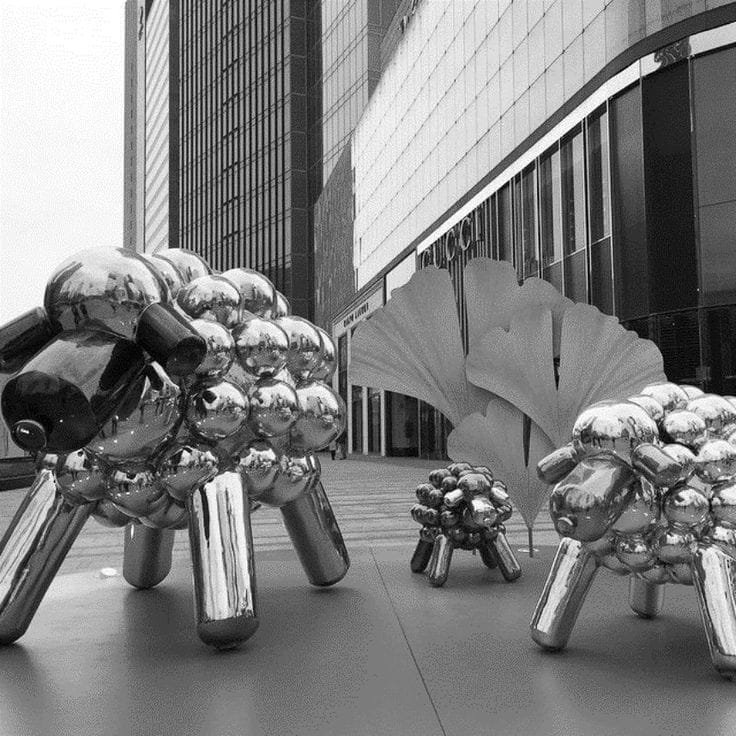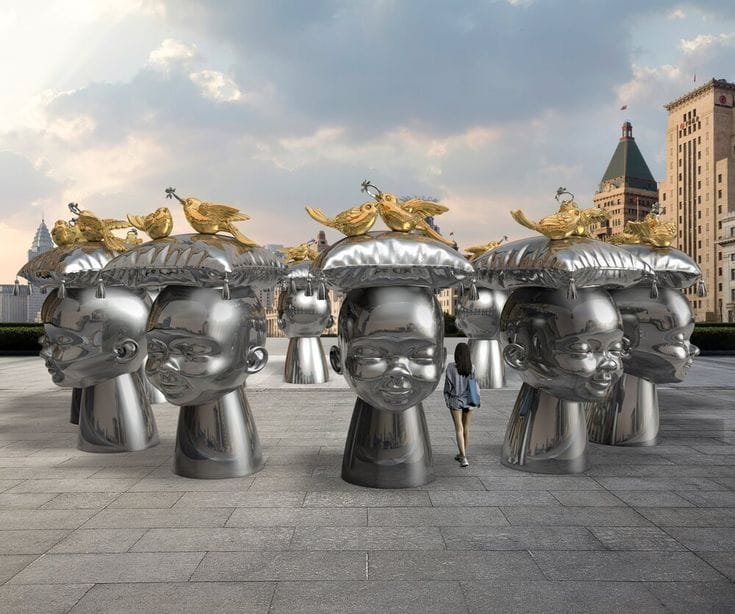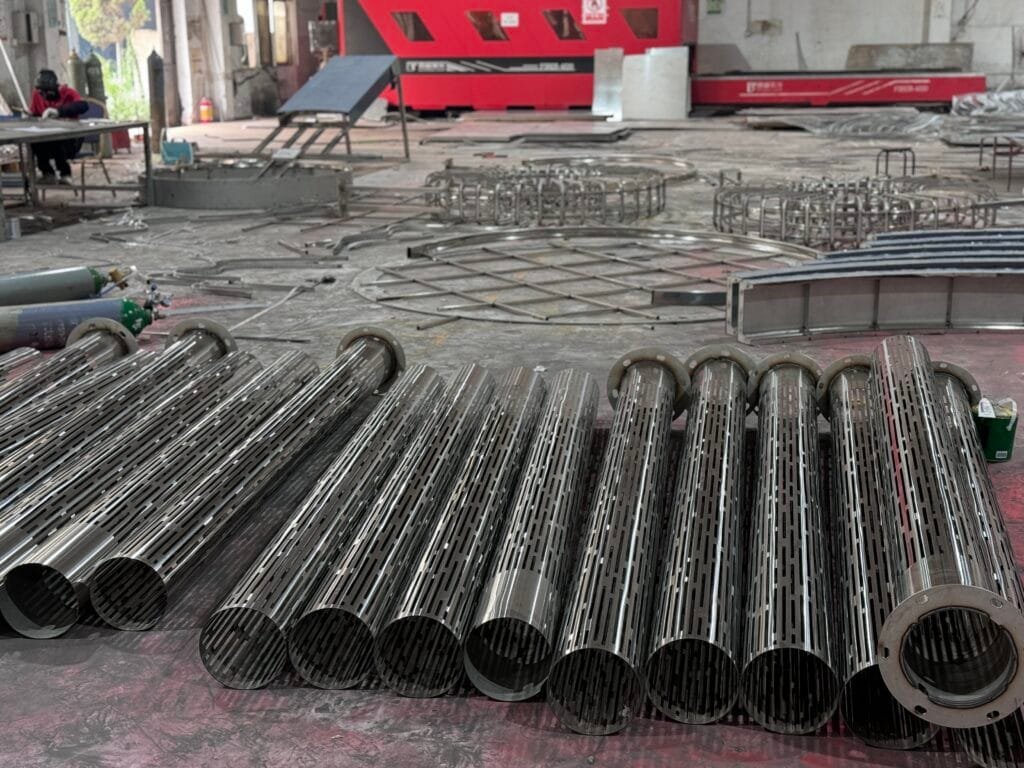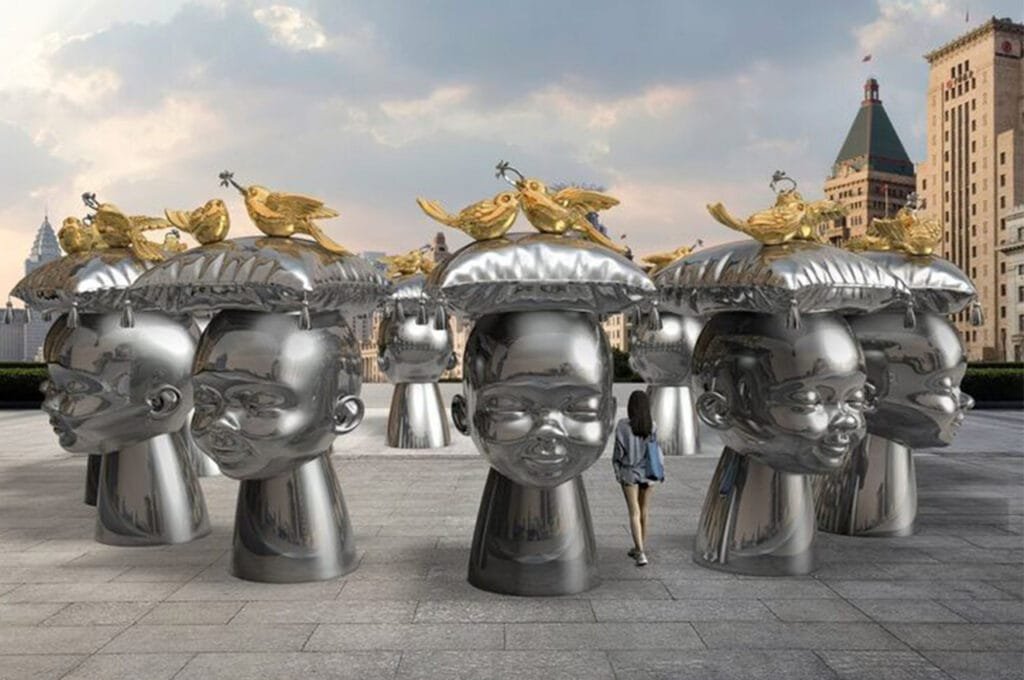Crafting a stainless steel sculpture is a meticulous endeavor, and the cornerstone of its success lies in the careful selection of the right material. This choice significantly impacts the sculpture’s durability, visual appeal, and lifespan. Renowned for its remarkable corrosion resistance, robust strength, and adaptability, stainless steel has become the material of choice for sculptors worldwide. This comprehensive guide will delve deep into the characteristics of the primary stainless steel grades—201, 304, and 316—and also explore other viable options for stainless steel sculpture projects.
1. Stainless Steel 201 for Sculptures
Properties
- Composition: Stainless Steel 201 features a lower nickel content in contrast to 304 and 316, while having a higher manganese proportion.
- Corrosion Resistance: Its corrosion resistance is moderate, inferior to that of 304 and 316. However, it performs adequately for indoor settings and light outdoor applications.
- Strength: Boasting high tensile strength, this grade is well-suited for structural purposes.
- Cost: Thanks to its reduced nickel content, Stainless Steel 201 is more budget-friendly.
Ideal Applications
- Indoor Use: Ideal for indoor stainless steel sculptures and decorative elements where extreme corrosion resistance isn’t a top priority.
- Budget-Friendly Projects: A great option for projects with cost constraints that still demand a durable sculpting material.

2. Stainless Steel 304 for Sculptures
Properties
- Composition: Comprising 18% chromium and 8% nickel, it is commonly referred to as 18/8 stainless steel.
- Corrosion Resistance: Exhibits excellent corrosion resistance, making it suitable for a broad spectrum of environmental conditions.
- Formability and Weldability: Highly malleable and easily weldable, Stainless Steel 304 offers great versatility in sculpture creation.
- Durability: Demonstrates good resistance to oxidation and general wear and tear.
Ideal Applications
- Urban Outdoor Sculptures: Perfect for outdoor stainless steel sculptures in urban environments.
- Detailed Artwork: Well-suited for art pieces that require intricate shapes and fine detailing.
- Moderate-Stress Projects: Appropriate for projects exposed to moderate environmental stress.

3. Stainless Steel 316 for Sculptures
Properties
- Composition: Composed of 16% chromium, 10% nickel, and 2% molybdenum.
- Corrosion Resistance: Offers superior corrosion resistance, particularly in chloride and saltwater-rich environments.
- Strength: Comparable to 304 in terms of strength, but with enhanced resistance to pitting.
- Durability: Extremely durable, making it the go-to choice for harsh environments.
Ideal Applications
- Coastal and Marine Sculptures: Ideal for sculptures located in coastal areas or exposed to saltwater.
- Industrial Public Art: Suitable for public art installations in industrial zones.
- High-Corrosion-Resistance Needs: Perfect for sculptures that demand the highest level of corrosion resistance.
4. Other Stainless Steel Grades and Materials for Sculptures
Austenitic Stainless Steels (Excluding 304 and 316)
- 301: Recognized for its high strength and good corrosion resistance, 301 is an excellent choice for large, load-bearing stainless steel sculptures.
- 310: Excels in high-temperature conditions, making it perfect for sculptures exposed to elevated heat.
Ferritic Stainless Steels
- 430: Provides good corrosion resistance and formability, along with magnetic properties. It’s commonly used in decorative indoor stainless steel sculptures.
Duplex Stainless Steels
- 2205: Combines high strength with outstanding resistance to stress corrosion cracking, making it suitable for applications in the oil, gas, and chemical processing industries.
- 2507: As a super duplex stainless steel, it offers increased strength and enhanced corrosion resistance, making it ideal for highly corrosive environments.

Key Considerations When Choosing the Right Material for Stainless Steel Sculptures
Environmental Conditions
- Thoroughly evaluate the sculpture’s exposure to elements such as moisture, salt, chemicals, and temperature variations. This assessment will help determine the material’s ability to withstand the intended environment.
Aesthetic Requirements
- Decide on the desired finish for your stainless steel sculpture, whether it’s a polished, brushed, or painted surface. The material chosen should be compatible with the intended aesthetic outcome.
Structural Requirements
- Take into account the mechanical properties necessary for your sculpture, including tensile strength, hardness, and wear resistance. These factors will ensure the sculpture’s structural integrity and longevity.
Budget Constraints
- Strike a balance between the initial material cost and the long-term maintenance and durability requirements. Consider the overall lifecycle cost of the material to make an informed decision.
Compliance and Standards
- Ensure that the selected material adheres to relevant industry standards and regulations, especially for public stainless steel sculptures. This compliance is crucial for safety and quality assurance.
Expert Consultation
- Seek advice from material scientists, experienced artists, or reputable suppliers. Their expertise can provide valuable insights and help you choose the best material that aligns with your specific project requirements.
With more than 10 years of dedicated experience as a leading stainless steel sculpture supplier, Alisn stands out as a reliable partner. We offer unparalleled professional technical support in stainless steel materials and employ the most advanced processing techniques. Our team of skilled craftsmen, with extensive experience in stainless steel sculpture processing, is committed to ensuring that your stainless steel sculpture reaches its full potential in your project.
In conclusion, choosing the right stainless steel material for your sculpture project requires a comprehensive understanding of the properties and applications of various grades. By carefully considering environmental factors, aesthetic and structural needs, budget constraints, and regulatory compliance, and seeking expert advice when necessary, you can make an informed decision that guarantees the success and longevity of your stainless steel sculpture. Whether you opt for the cost-effective 201, the versatile 304, or the highly corrosion-resistant 316, the right material choice will undoubtedly enhance the beauty and durability of your artistic creation.
